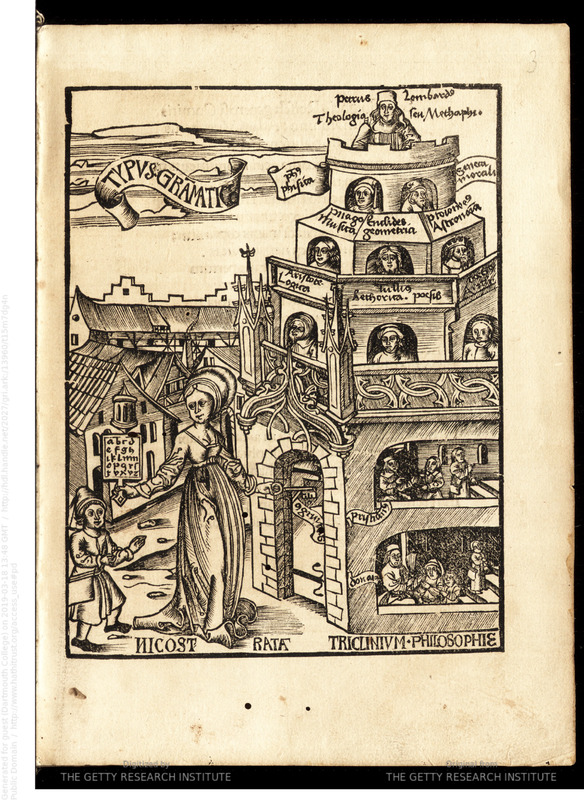
This woodcut depicts the liberal arts at the height of their expression in the late Middle Ages. Starting at bottom left, you see a very young student following Nicostrata, the goddess who invented the Latin alphabet. She holds up a hornbook with the letters of the alphabet; hornbooks were used to instruct the young. In her other hand she has a key. Grammar was the key the foundation to which all worthwhile knowledge depended on.
Key to the Triclinium Philosophiae (“Banquet of Knowledge”): Grammar is at the bottom two floors, represented by the Roman grammarians Donatus and Priscian; on the third, logic, rhetoric and poetry represented by Aristotle, Cicero (“Tullius”), and Boethius; on the fourth, music, geometry, and astronomy (i.e. astrology) represented by Pythagoras, Euclid, and Ptolemy, on the fifth, logic and ethics represented by Aristotle (“Philosopher”) and Seneca the Younger, and at the top, theology and metaphysics, represented by the most famous scholastic theologian of the Middle Ages, Peter Lombard.

